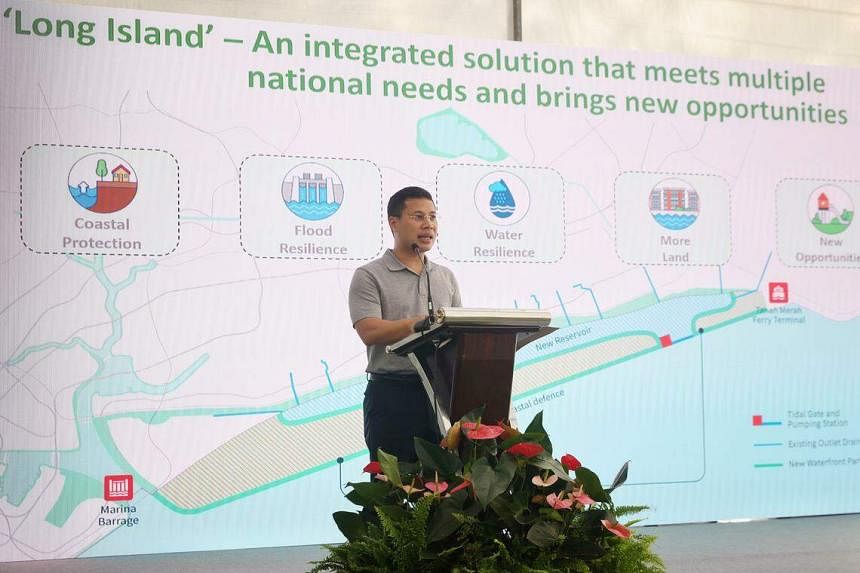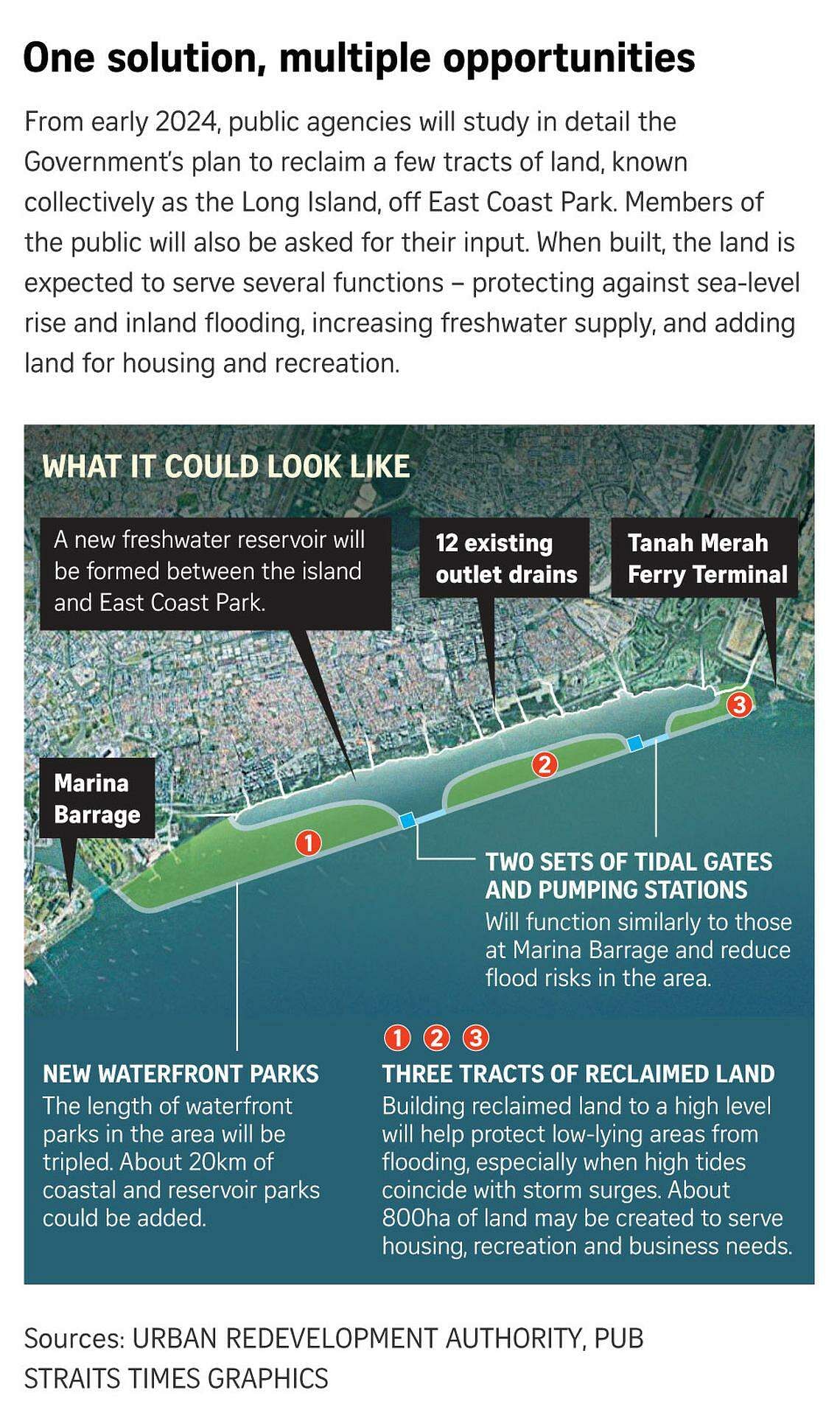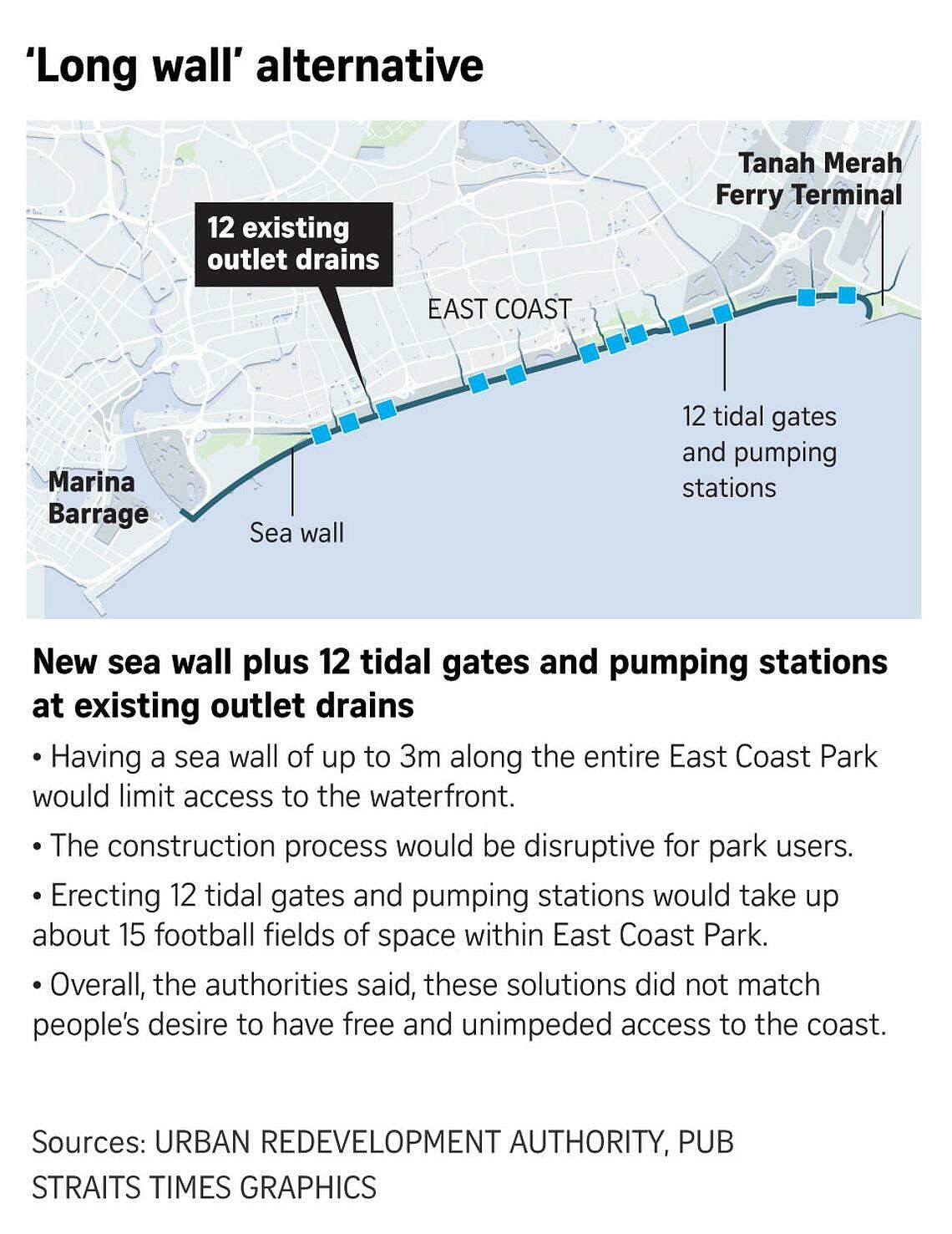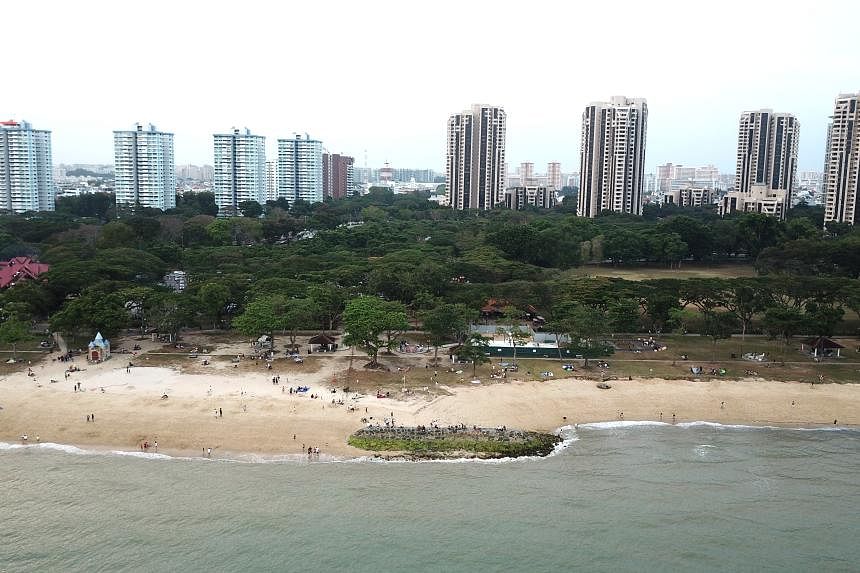SINGAPORE – Reclaiming land off East Coast Park for coastal protection is the right approach that will also meet the country’s other long-term needs, said experts in the wake of an announcement that public agencies will study in detail plans to build a Long Island in the coming decades.
National Development Minister Desmond Lee said on Nov 28 that the authorities will soon begin extensive environmental and engineering studies on the reclamation plans, which are expected to yield about 800ha of land that will protect the East Coast area from sea-level rise and create space for development as well as a new reservoir.
Professor Yong Kwet Yew of the National University of Singapore’s Department of Civil and Environmental Engineering said the two main drivers of the project – future land needs and protection against sea-level rise – require a long-lasting solution.
It makes economic sense to address them simultaneously through reclamation, he added.
Prof Yong, who chairs national water agency PUB’s Coastal Protection Expert Panel, warned that should nothing be done to protect the East Coast area, it would suffer beach erosion and eventually be a victim of permanent flooding due to sea-level rise, resulting in the loss of space.
He said studies will need to be carried out to ensure the impact of reclamation on marine ecosystems and maritime activities is kept to a minimum.
The National Parks Board should be as involved in planning for reclamation as agencies such as the Urban Redevelopment Authority and PUB, he said, noting that there are opportunities to protect and nourish the marine ecosystem while developing the Long Island.
Professor Chu Jian, chair of the School of Civil and Environmental Engineering at Nanyang Technological University, said the authorities should explore innovative reclamation solutions, for instance by avoiding dredging – the removal of silt and sediment from the bottom of the sea – when building sea walls.
In-depth studies could also help planners avoid reclaiming land close to where corals and seagrass are flourishing, he added.
Prof Yong said the authorities could time reclamation works in accordance with land use and coastal defence needs over the next 15 to 25 years.
Given that about 800ha of land – twice the size of Marina Bay – may be reclaimed, works will be carried out in stages, similar to past reclamation along the eastern coast.

Between 1966 and 1985, 1,525ha was reclaimed between Tanah Merah and Marina South.
The engineering challenges should be no different from previous reclamation work done in East Coast, said Prof Yong, aside from the landfill taking place in deeper waters for this project.
On developing the Long Island, Ms Iyn Ang, managing director of urban planning, landscape and interior design firm CPG Signature, said planning for infrastructure, including essential networks such as transport systems, roads, utilities and drainage systems, is crucial for any successful reclamation project.
Planners will have to balance between catering for future generations and mitigating environmental impact, she said, adding that the reclaimed land should ideally provide for new jobs and lifestyle improvements.

Ms Christine Sun, senior vice-president of research and analytics at OrangeTee & Tie, said the reclamation project is likely to have limited impact on the housing market now. Long-term impact will depend on specific development plans.
She noted that some homes that currently have sea views will instead have reservoir views in the future.
That said, East Coast residents could benefit from more recreational facilities, as well as quicker commutes to work if new offices are built on the Long Island. More will also benefit from having waterfront views from their homes, Ms Sun said.
Given that the reclamation project will be decades in the making, Dr Harvey Neo, professorial research fellow at the Lee Kuan Yew Centre for Innovative Cities, said the Government has to sincerely engage citizens to convince them that the project is necessary and compelling.
Noting that many might not live to see its completion, he said the Government cannot assume that all will be equally enthused and committed to a future that is beyond their lifetime.
“The time horizon for planning the future is probably much shorter for individuals, compared with the Government; nor are individuals and the Government necessarily aligned when it comes to the things that matter for the future,” said Dr Neo.



